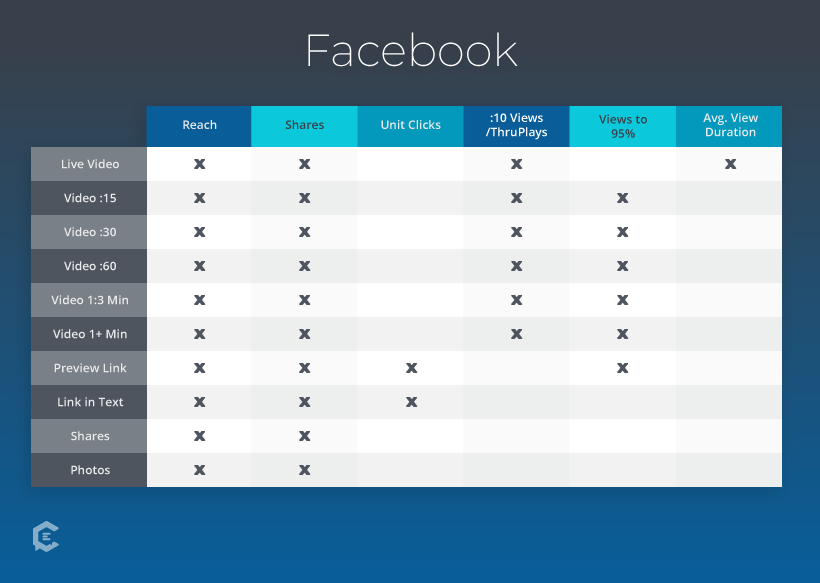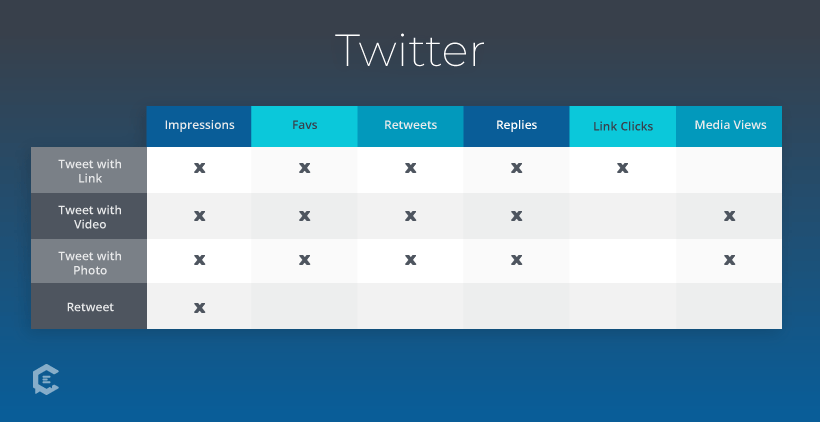Measuring social media ROI continues to be difficult for some marketers — but a big reason for that is because we often look beyond the mark when gathering and reporting data. The truth is that there is so much data available from every social platform that marketers can get lost in the numbers.
Don’t get us wrong, we’re all about letting data inform your content strategy, but there is simply so much data available that you need to set a limit somewhere so you avoid drowning yourself in the analytics.
In order to utilize data as a friend of your marketing efforts, you need to standardize how you review and report social media data. For example, if you published a link to your blog on Facebook last week and reported on its reach, then you publish another blog link and report on click-throughs, you’ll have no way of comparing these posts apples-to-apples.
BlitzMetrics Chief Technology Officer Dennis Yu puts it this way:
The most important thing to keep in mind when measuring social ROI is using the same metric that you use for all the other channels . . . The same metrics you use for any other channel should be the same metrics, shouldn’t they be, for social?
Obviously, marketers have at their disposal different platforms and different tools on those platforms to achieve their purposes. There is nothing wrong with utilizing as many tools within platforms as possible, but when you do, make sure you standardize how you measure them. As you do, your ability to create a baseline for different post types will help you determine ROI and which post types are going to be most effective for you in the long run.
Templates for measuring social media ROI
So, then, the question of how you standardize your metrics needs to be answered. There is likely no single answer of how to do this. The most important thing is that you define what you will measure— and then you stick with it.
We’ll provide you with a template of what you could measure here — but feel free to adjust and change as needed to help your organization align its social publishing with its overarching goals. Below you will find basic templates that you can adjust to suit your own organization’s needs. The key thing is that you are somehow standardizing how you measure.
For the purpose of this exercise, we’re sticking with Facebook, Twitter, Instagram and YouTube—but you certainly aren’t limited in what you utilize.
Key principles
- With this graph, we are placing Facebook posts into three main categories, with a few sub-categories falling underneath each of the categories. The post categories include videos, links and photos.
- Facebook recently announced that it would no longer charge video advertisers unless a member of the intended audience watches the full video — or 15 seconds of the ad (whichever is shorter). Facebook will report to users three-second views, but because three seconds is about how long it takes you to scroll past a video on your device, we’re proposing you ignore that number and instead focus on ThruPlays for video ads or 10-second views for organic posts. Those numbers will at least give you an indication that Facebook users were interested enough to stick around for a little bit of your video.
- We also propose you report how often users watch your videos to 95 percent completion. By measuring this for videos 15 seconds or fewer; 16-30-second videos; 31-60-second videos; 1-3-minute videos; and videos longer than three minutes, you can make a determination over time of how likely viewers are to watch videos of each length.
- Sometimes you may include preview links with posts. Other times, you may utilize a link-in-post text. This guide proposes you measure reach, shares, and link clicks with both kinds of these posts. In doing so, you can establish a baseline for which kind of these posts yields the most click-throughs.
- Remember, Facebook itself is saying that it will give prominence in the news feed to videos that are longer than three minutes — if the videos are engaging to your audience.
Applying what you learn
- Pay attention to the reach, shares and 95-percent completion rate for each of the video types you measure. Continuing to measure this over time will allow you to have a solid understanding of how your audiences are likely to engage with each video length.
- Review the click-through rate of posts that include link previews vs. those that include links in the post text. If the purpose of your post is to point people to a web page, understanding the method that (1) garners the most reach and (2) encourages the most people to click, will be helpful in determining which type of delivery is most effective for reaching your audiences, and thus you can justify more ad spend or more organic efforts on that sort of delivery in future posts.
Key principles
- Except for in some extreme instances, your tweets are largely only visible and engaged with for a matter of minutes. In the best case, maybe hours. Usually your tweets get about half of its engagements within the first half an hour after it is published. Because of this, you shouldn’t be afraid to tweet the same — or similar — tweets more than once to get a more full picture of how your tweets perform.
- Twitter may be an effective place to focus on community engagement and user response rather than proactive content development. If your company determines to utilize Twitter as a customer engagement tool rather than a mass messaging tool, the methods you use to determine success may differ from what is listed here.
Applying what you learn
- When measuring your tweets, you should be able to determine fairly quickly how people are engaging with your tweets. Including a link with your tweets doesn’t guarantee click-throughs, so look closely if your tweets are actually leading people to your website or product pages. If not, you may want to adjust your strategy to make Twitter more about reach and reputation management — or you may even decide Twitter isn’t an important tool for your brand.
Key principles
- In some ways, when we talk about Instagram, we are actually talking about three different tools — Instagram timeline posts; IGTV; and Instagram Stories.
- With Instagram timeline posts, you have options to publish a single photo, a single video or a carousel of photos and/or videos. Because Instagram doesn’t report on view length of videos published on the timeline, you will not be able to effectively know how many people viewed your videos to completion. However, if you compare 15-second, 30-second and 60-second videos, you should be able to determine over time which video length does the best at driving reach, engagements and views.
- IGTV is a newer tool that continues to develop. As it does so, the availability of data will also improve. For example, Instagram is providing some basic reporting on video completion percentage with IGTV. As this reporting becomes more sophisticated, you may want to include video completion percentage with your IGTV reporting.
- Instagram Stories are much different from Instagram timeline posts. Most notably, you may include links in Instagram Stories — meaning examining click-through rates should be an important part of your Instagram Story analysis.
Applying what you learn
- You may utilize Instagram Stories for different purposes than you utilize timeline posts. For example, if you are finding users are swiping up on your Instagram Story links, you may find these organic posts are providing you an excellent resource to getting people to blog posts and product pages on your website. If that is the case, you will want to adjust your timeline and story strategies.
- With the knowledge of how well people engage with your 15-second, 30-second and 60-second videos, you will better be able to determine how long you should be making videos going forward to garner the best engagement.
YouTube
Key principles
- YouTube will provide you with a lot of data, but as is true with all other platforms, simplifying and standardizing what you measure will prove to be valuable for you. For short, medium-length and long YouTube videos, we propose examining total views as well as average view duration.
- With ads on YouTube, you can learn quite a bit — including how many people make it through 25 percent and 100 percent of the ad. It is also important to include the amount of ad spend included on any ad to help you determine how much of a bump ad spend gives you over organic posts.
- If you have serialized YouTube videos, categorize those in your measurements and see how they stack up to videos that stand on their own.
Applying what you learn
- Don’t assume that your video content will perform the same on YouTube, Facebook and Instagram (or IGTV). A report by Wistia details that fewer than 2/3 of viewers will stick around for a 4-5 minute video on YouTube. However, for 1-2-minute videos, about 75 percent could stick around for the full video. It is unlikely your Facebook completion rate will be as high as the YouTube completion rate.
- Let the number of views and the average view duration guide you when you develop YouTube videos in upcoming months. Does your video really need to be 10 minutes long? Does the data support that you have more views when you do so?
Remember, what and how you measure will depend on your organization and its goals. But in order to best determine success, be consistent over time in what you measure and report and you will be empowered to make decisions that will increase your ROI because you will take much of the guesswork out of your social media publishing efforts.







